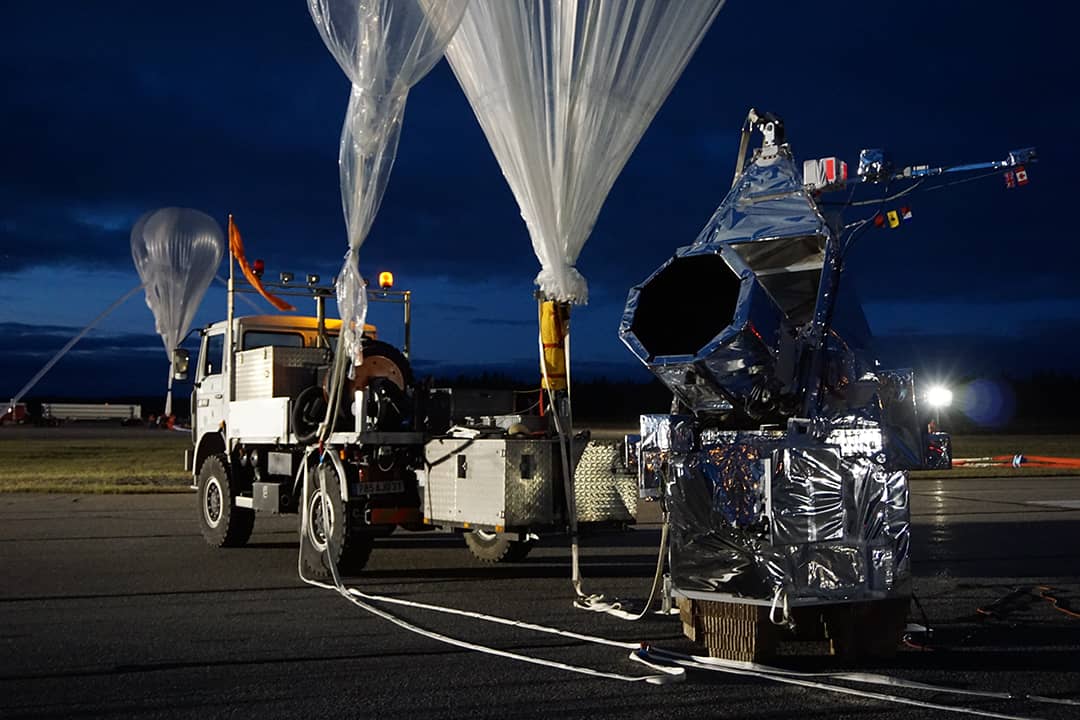Our knowledge of the universe is ever-growing, but it seems that with every answer we find, a plethora of questions come spiraling forward. We as humans are always trying to learn more about galaxies outside of our own, but are limited by our current technology.
Since its 1990 launch, the Hubble Space Telescope has provided astronomers with unparalleled optical data about distant galaxies. As a space telescope, Hubble gathers better data than terrestrial alternatives because there is no atmospheric distortion.
Now, a novel instrument named the Superpressure Balloon-borne Imaging Telescope (SuperBIT) has been developed by an international team led by the University of Toronto’s departments of physics and astronomy and the Institute for Aerospace Studies as an affordable high-precision alternative to Hubble. SuperBIT’s international collaborators include Princeton University and Durham University in the United Kingdom
Why do astronomers need advanced telescopes?
When the Hubble Space Telescope was launched in April 1990 it was the first major optical telescope placed in space. It has since been used for over 30 years to image galaxies and stars distant from our solar system. Over 30 years, it has provided some of the most detailed and captivating images from space, along with data that has enabled astronomers to investigate exoplanets, interstellar physics, galaxies, stars, black holes, and beyond.
Hubble’s chief advantage is that its images are crystal-clear, and free from the atmospheric distortion that ground-based telescopes experience. But clarity doesn’t come cheap.
When it was built, Hubble cost approximately 5 billion USD, and required a 2.4 metre-wide mirror to provide clarity and accuracy. SuperBIT has been priced at 2 million USD — just 0.4 per cent what it cost to build Hubble. However, its mirror is around five times less wide than Hubble’s, with a width of half a metre.
Carried up to 35 kilometres above ground level by balloons, the SuperBIT telescope gathers high-resolution data in the visible-to-near-ultraviolet (UV) range of light. Its altitude above 99 per cent of the atmosphere provides the same lack of atmospheric distortion that makes the Hubble so valuable. In September 2019, SuperBIT went on an 18-hour flight and achieved a resolution of 260 milliarcseconds with a 0.5 metre mirror.
The role of SuperBIT in astronomy
A U of T-affiliated study has examined the design and flight results of the SuperBIT telescope.
A fully operational three-month flight has been scheduled from New Zealand in 2021. This location was chosen over higher-latitude areas such as the Antarctic, as it becomes difficult to maintain alignment of the sensitive optical components and stability in areas with constant daylight.
Currently, there are three other space telescopes in development that will surpass the Hubble in the red and near-infrared wavelengths of light: the Euclid telescope from the European Space Agency, NASA’s Wide-Field Infrared Survey Telescope (WFIRST), and the James Webb Space Telescope.
All of these telescopes, however, lack the ability to detect blue and UV wavelengths — Euclid is also too shallow to capture the specific shapes of different galaxies, and WFIRST is limited to infrared. Using a superpressure balloon-borne telescope can fill these gaps.
SuperBIT can detect blue and UV light in part because of its narrow aperture. Its opening is made as small as possible without distorting the image — any smaller and light diffracting through the aperture would reduce the image’s sharpness. This process is known as diffraction-limited imaging.
Dr. Javier Romualdez, a postdoctoral researcher at Princeton University working on SuperBIT who also previously worked on the telescope at U of T, spoke to The Varsity about the advantages of SuperBIT. He explained how diffraction-limited imaging was managed by ensuring that the telescope’s optics achieve and maintain stability.
“[With this stability], we are not limited by… optical misalignment or imperfections in the mirror. We are actually limited by the physical size of the telescope, which is where you want to be.”
What are SuperBIT’s current challenges?
A major limitation of SuperBIT is its lower resolution compared to that of the Hubble. “The resolution is a statement about how fine a detail you can get within a single picture. Because Hubble has a lot larger mirror, and is a lot more sensitive, you can actually have a lot higher spatial resolution,” said Romualdez.
Astronomers can get around this issue by taking the same image repeatedly to get a wider field with comparable resolution.
Another constraint is SuperBIT’s maintenance requirements. Its gondola, for instance, needs to be able to self-regulate power, charge batteries, calibrate optics, and prevent damage to the optical components.
The project also needs an effective method to send compressed data down to waiting researchers on the ground. Researchers also need to create a backup system to recover full data payload in the event it becomes irrecoverable.
Next steps with the SuperBIT during the COVID-19 pandemic
SuperBIT is scheduled for a three-month super-pressure balloon flight from Wanaka, New Zealand in 2021. Due to the COVID-19 pandemic, the Italian collaborators on the SuperBIT have had more time to work on the telescope.
“They have actually moved their estimates for the telescope forward rather than backward,” said Romualdez. The longest flight they have done with a super-pressure balloon was 54 days back in 2009.
Hopefully, SuperBIT can be used to further understand the increase in mass and number of cosmic structures, which in turn sheds some light on open questions, such as the nature of dark energy.


